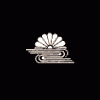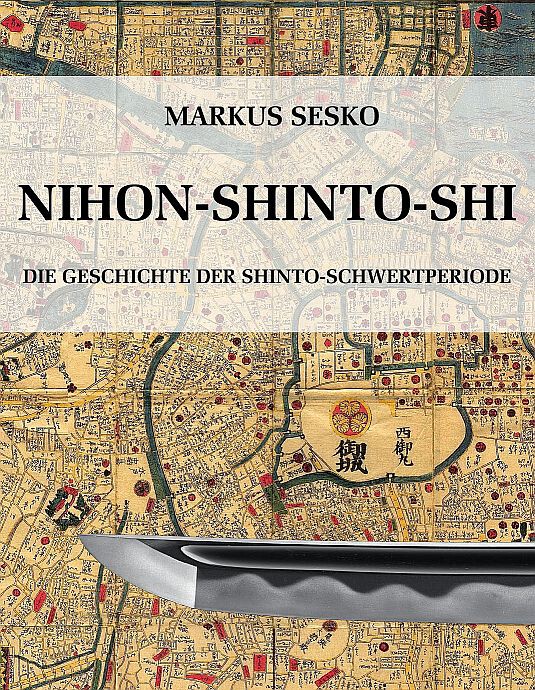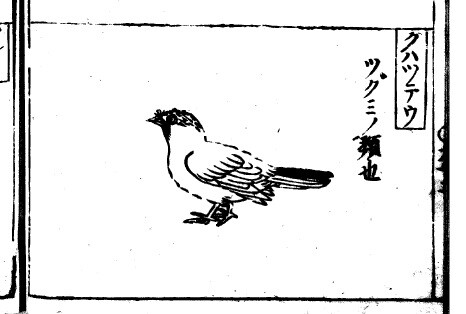-
Posts
936 -
Joined
-
Last visited
-
Days Won
24
Content Type
Profiles
Forums
Events
Store
Downloads
Gallery
Everything posted by Markus
-
I don´t know of any online tsuba handling guide but you pointed out the major points: Kinko works ALWAYS with gloves and iron tsuba without, unless the owner wishes that they are handled with gloves. In addition, when tsuba are presented on a padded plate and when they are allowed to be touched, they should not be lifted up too high, i.e. that you can check them from a standing position. Just lift them a bit from the padded plate so that there is less chance to drop them.
-
Thank you Brian four your kind words. @John: And I thought I was missing something :D I even checked facebook if there are more pics provided by Mike. Somehow I missed his post on FB. Maybe because I am hardly ever scrolling down very far.
-
@John: At the left hand picture all I can see is the kiristuke-mei of the nickname "giboshi fûsetsu tomarazu" and highlighted in white the same characters.
-
"Giboshi" is actually not the handrail but the onion-shaped ornament on a bridge handrail. So the inscription "Snow does not accumulate on a giboshi [ornament]" makes actually sense as it IMHO refers to the same thing as a snow or dew drop slips off a leave without using any force. And voila, a nickname of a supersharp blade. http://www.aisf.or.jp/~jaanus/deta/g/giboshi.htm
-
I wonder who the hell is faking papers that way, making all the work with copying the proper form but entering a weird alien inscription. Oh wait, Klaus, is the blade offered to you maybe really "signed" like quoted on the paper?
-
The mei says "Shunkôdô Yasutaka" (春光堂安孝) but the Yasutaka in Haynes is not the one here and the two artists using the gô "Shunkôdô" did not use the name "Yasutaka". Thus I guess meikan-more...
-

Translation Request on Menuki Kiri Bako
Markus replied to Cypress Bayou's topic in Translation Assistance
Hi James, The lid says: 古後藤 Ko-Gotô 獅子目貫 shishi-menuki And the inscription on the inside of the box (hakogaki): 赤銅金地 shakudô-kin-ji (shakudô and gold ground) 芋継容彫 imotsugi katachibori (blind joint, motif itself forms the outward shape) 無銘古後藤 mumei, Ko-Gotô (unsigned, Ko-Gotô work) 昭和庚戌初夏 Shôwa kanoe-inu shoka (early summer of the year of the dog of the Shôwa era [= 1970]) 寒山誌+花押 Kanzan shirusu + kaô (written by [satô] Kanzan + seal) -

Could anyone help with Saya translation please.
Markus replied to Stegel's topic in Translation Assistance
It is interesting that the nakago shows a slight tendency to tanagobara and that the sayagaki attributes the blade to an earlier, i.e. Ôei-era Murmasa and not THE Muramasa. -
viewtopic.php?f=15&t=14798&hilit=koremune
-
It´s me again. I was able to finish another project which I was working at alongside other projects since I did the German version of Dr. Honma´s "Nihon-koto-shi". So this is now the "Nihon-shinto-shi", the history of the shinto era, for the present in German, but an English version will follow... Its 444 paperback pages with 321 b/w pics and oshigata. I attach the table of contents and a preview so that you can get a general idea of the publication. Thank you for your attention. http://www.lulu.com/shop/markus-sesko/n ... 60512.html http://www.lulu.com/shop/markus-sesko/e ... 69077.html And for the English readers, please have patience with me. Vorschau.pdf VorwortInhalt-NihonShintoShi.pdf
-

Please help to translate this cutting test inscription
Markus replied to Drago's topic in Translation Assistance
Jôkan, chûkan and gekan (上浣・中浣・下浣) for the third of a month are rare for sword inscriptions but not uncommon in general. The last character (様) means "tameshi" in this context. My opinion is that the mei is real but done by a non-professional sword tester who also refrained from signing his name. -
Thanks for sharing! It is amazing to see how much effort they put back then into refining the steel as much as possible. Interesting is alos how Hizen Tadayoshi tried to revive this nashiji-hada via his konuka-hada. This becomes apparent at a very fine Yamashiro-inspired sunnobi-tanto of Tadayoshi I published some time ago in my "Swords from the Nihonto-Club Germany". This blade is awesome when examined hands on. I guess the pic below fails to meet the brilliance of the jigane but may the uniformity of the steel can be grasped.
-
Thank you Morita-san! So this line is: "Iga Shirôzaemon Shigenori, retainer of the Naruse fief" (成瀬候藩伊賀四郎左衛門重乗) Literally: "Iga Shirôzaemon Shigenori, [from the] fief of the Naruse lords." "Naruse" was another name for Owari´s Inuyama fief (犬山藩) because it was ruled by the Naruse family from 1617 to the abolition of the han system.
-
@Mike: I see it the other way round. :D It would be quite weird to fake a sword and then inscribe the name of a certain bird which is maybe only known to the readers of Kaibara Ekiken´s publication or a serious bird lover. I doubt that a (Chinese) forger is familiar with that term. Maybe the former owner of the sword had some time and connected whatsoever with that bird. Maybe he was as mentioned a bird lover and spotted one abroad during WWII on a special, to him memorable occasion? The pics look at least decent and do not scream "fake", as Tobias said.
-
The sayagaki reads as follows: 美濃国兼氏 無銘 弐尺三寸二分 安政元寅年十二月本阿弥直之丞研之 成瀬????四郎左衛門重乗 合鑑定 "Mino no Kuni Kaneuji, mumei 2 shaku 3 sun 2 bu. Polished and appraised by Hon´ami Naonojô in the twelfth month of Ansei one, year of the tiger. Naruse ???? Shirôzaemon Shigenori [there are four characters I can´t decipher on the pics so a translation of this line is impossible at the moment]" Hon´ami Naonojô Narishige (本阿弥直之丞成重, 1828-1882) was the 15th generation of the Hon´ami Ko´i line. He was the predecessor of the famous Hon´ami Ringa. 内藤三左衛門尉十一代孫越後村上城主内藤紀伊守信親佩刀也伝之信親嘉永六年老中ニ任シ文久二年辞シ元治元年養子豊前守信民家督節此刀ヲ譲ル "This sword was handed over to the adopted son Naitô Buzen no Kami Nobutami [1850-1868] on the occassion of his succession of the family when Naitô Kii no Kami Nobuchika [1813-1874] - who became rôju elder in the sixth year of Kaei (1853) - retired in the second year of Bunkyû (1864). Naitô Kii no Kami Nobuchika, who wore this sword, was the lord of Murakami Castle of Echigo province and the successor in eleventh generation of Naitô Sanzaemon no Jô [Nobunari, 1545-1612]." It would be nice if it is mentioned in the catalogue that the translation was done by me (Markus Sesko).
-
It is actually the name of a certain bird, found in Kaibara Ekiken´s 1709 publication "Yamato-honzô" (大和本草): I add the pic from the book below. The katakana-noted name of the bird is "ku-ha-tsu-te-u" (クハツテウ), although I am not sure about the actual pronunciation (kwatto?). The additional info says "tsugumi species", whereas "tsugumi" is a Naumann´s Thrush. Cute, I´ve never seen such a rare bird´s name on a swords tang before.
-
I think this is the smiths the mei refers to: Kanesaki (兼先), 9th gen., Bunsei (文政, 1818-1830), Inaba – „Inshū-jū Kanesaki“ (因州住兼先), „Inaba Fujiwara Kanesaki saku“ (因幡 藤原兼先作), „Myōichi Fujiwara Kanesaki“ (妙一藤原兼先), „Myōichi Hōsetsu Nyūdō Kanesaki“ (妙一峯雪入道兼先), civilian name „Heki Yasaburō“ (日置矢三郎), student of Minryūshi Toshizane (眠龍子寿実), those sources who list Jinroku Kanesaki (甚六兼先) as 5th generation list Yasaburō Kanesaki as 6th gen.
-
Unfortunately I wasn´t able to find a relyable "evaluation" of this Yoshimitsu. But spontaneously and out of lack of much info, I would say he was average to lower ranking.
-
Hi Marcello, the mei reads "Yabushita Yoshimitsu". This is the smith in question as listed in my swordsmith index: Yoshimitsu (義光), Shōwa (昭和, 1926-1989), Gifu – „Yoshimitsu“ (義光), civilian name „Yabushita Fujio“ (藪下不二夫)
-
實 is the old unsimplified version of 実, and 真 was written as 眞 before. So far, so good, but as both characters have basically about the same meaning, there were interchangably noted in earlier times. That means even if a tsuba artist was signing with 實幸, it is quite possible that he was noted later with 真幸 instead of 実幸. So I would not read too much into the notation with different characters and think that the Haynes entry H 08003.0 refers to this artist.
-
The correct reading is "Saneyuki". Haynes says "no additional information".
-
Gilles, your reading is correct. But I couldn´t find a Sukenori for that time and that gô, only the Keiô-era Yukisada (幸貞) who used "Ryûshinshi" (龍心子).
-
I am sorry for your trouble with Lulu. I too got a Shinto volume in English I did not order. @Veli: I have an idea. Maybe we can change our wrong volumes because I am just at sending it back to Lulu. Please tell me if this sounds anything good and I offer to refund you the shipping fee. @Gilles: Did you contact Lulu?
-
From a translators viewpoint, the term "fukushiki-gunome" is mostly used to describe the complex gunome interpretations of Sue-Bizen (Sukesada and the like).




